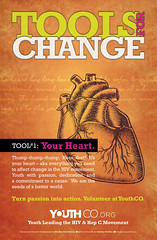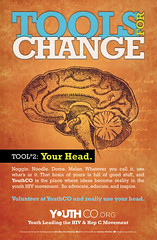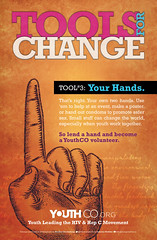Curing HIV: No Walk In The Park
What better way to really kick things off than with a CURE FOR HIV!
You may have seen this all over the news recently. A guy in Germany, known as “the Berlin Patient” seems to be cured of his HIV in a very interesting, complicated, and impressive way: a stem cell transplant.
This is actually kinda old news. In fact, the first report by Hütter and colleagues was published in the New England Journal of Medicine almost exactly 2 years ago. Here’s the link for those who want to read for themselves, but I’ll try to break it down for you as best I can.
Here’s the bottom line:
- HIV requires a certain human protein called CCR5 to get into cells
- The Berlin Patient was HIV-positive, developed cancer and received a stem cell transplant
- The stem cells were from a donor with a mutant version of the gene for CCR5
- The patient’s HIV infection did not come back after the transplant, even though he was off anti-HIV meds
- Although interesting, the very intensive and risky treatments for this patient and the rarity of the CCR5 mutation make this not a useful cure for any big-picture approach to dealing with the HIV epidemic
 That’s the overall picture. Now let’s get into the details.
That’s the overall picture. Now let’s get into the details.
The Berlin Patient is in his early 40s, and had been HIV positive for about 10 years before all this happened. Then unfortunately, he got a kind of blood cancer called acute myeloid leukemia. His doctors tried to treat his cancer not once, not twice, but three times with chemotherapy – but it didn’t work. It was at this point that they started considering a stem cell transplant.
Just so it’s clear:
- Leukemia is a cancer of the white blood cells of your immune system.
- HIV infects white blood cells.
- White blood cells (and all the other blood cells) are produced from stem cells in the spongy bone marrow that is inside many of our bones.
- A stem cell transplant involves destroying your own stem cells in your bone marrow with chemotherapy, injecting new stem cells from another person, which find their way to the bone marrow and basically start replenishing your immune system. Here’s a short video about it.
What made their approach so special was the donor that they chose. Whenever you do a transplant, you check for a “match” by looking at a set of genes called HLA (which actually have some interesting connections themselves to HIV, which I may blog about another time). But the patient’s doctors not only made sure that they had a matching donor, but also looked to see whether that donor had a defective gene. Yes, that’s right. A defective gene.
The gene in question is called CCR5. The protein it makes is sort of the entry point that HIV uses to get into cells. In fact, this is a big part of what I’m studying for my PhD!
Now we’ve known for a while that there are some people (about 10% of Caucasians) that have a big chunk missing out of their gene for CCR5. That defect is known as CCR5 delta-32 (delta for deletion and 32 for the number of bases missing from the gene). Now, very rarely (only about 1% of Caucasians), people have two copies of this CCR5 delta-32 mutation (one from mom and one from dad). With two defective copies, it’s almost impossible for them to get nfected by HIV , since the protein doesn’t actually end up on the surface of cells. This “resistance to infection” is the idea that was used here.
There were 80 potential donors who were a “match” for the Berlin patient, but only one that had two copies of the delta-32 mutation. And that’s the donor they picked.
The patient had been on anti-HIV treatment (Highly Active Antiretroviral Therapy, or HAART) for around 4 years prior to this, and had an undetectable amount of virus in his blood (the viral load) right up until the day of the transplant (he went off HAART the day before, and hasn’t taken it since).
The whole procedure for a stem cell transplant is really intense. And can have a risk of death from ~10% to as high as 40%. Definitely not something you’d want to do if you had a choice. You have to take a bunch of treatments before and during the transplant process to protect against a nasty thing called Graft versus Host Disease (GvHD), where basically the transplant attacks its new host. Not fun.
Worse still, the cancer came back about a year later. Again. So the patient went through a round of radiation treatment and they tried the transplant again from the same donor. This time the cancer didn’t come back, and neither did his HIV. The patient hasn’t been on HAART since, and yet they can’t find HIV in his blood! Even his antibodies against HIV have started to disappear, which might be because basically there’s just no HIV around for his immune system to bother with making antibodies against.
A follow–up report in the journal Blood deals with the same patient. The paper essentially confirms that this was indeed a cure. It had been close to 4 years since the transplant, when the paper was published and unfortunately the Berlin Patient had a number of medical problems in the meantime, even though his HIV wasn’t one of them:
His doctors suspected GvHD in his intestines, so they took biopsies (tissue samples) of his colon. He also had liver problems, which required another biopsy. Then he had neurological disorders, so he had some cerebral spinal fluid (the fluid that your brain sits in) taken, and had a brain biopsy. A lot of biopsies, in a lot of different areas of his body. The reason I bring this up is not only because it emphasizes that this has been no walk in the park for the Berlin Patient, but also because the authors of the paper could look at these biopsies to check for HIV.
They looked, and could not find HIV in those tissues or in the blood. Also, by two years after the transplant, there were no cells in any of these tissues that they could see still with CCR5. Essentially, his immune system had been replaced with cells made from the stem cells from the transplant. And none of these had CCR5 on the surface, no matter where they looked – be it the blood, the colon or the brain. The patient’s CD4 count (CD4 cells are the cells that disappear over the course of HIV infection) has now risen back up to levels you’d typically see in a healthy person his age.
All in all, no detectable HIV anywhere they looked. There was no free virus they could detect floating around in the blood. And after about 2 months there was not even any HIV that could be detected in cells. This is notable because HIV actually sticks its genome into our own DNA in cells it infects, and can potentially remain there “hibernating” for a long time. Yet, after two months, even this type of HIV couldn’t be detected. And the virus hasn’t showed up in the 4 years since. Pretty compelling evidence for a cure.
So this whole process involved:
- HAART meds
- 3 rounds of chemo
- Treatment against graft versus host disease
- Finding a donor that not only matched the patient’s HLA genes, but also had the extremely rare case of two copies of the delta-32 mutation to boot
- A stem cell transplant
- Radiation therapy
- Another stem cell transplant
- Continued treatment for GvHD
- A bunch of biopsies
- Countless hospital visits
- A number of dangerous procedures that have substantial risk of the patient dying
Not exactly what I’d call a winning cure. But really fascinating anyway.




Great read, thanks for the post!
Thanks for simplifying the science for the rest of us!